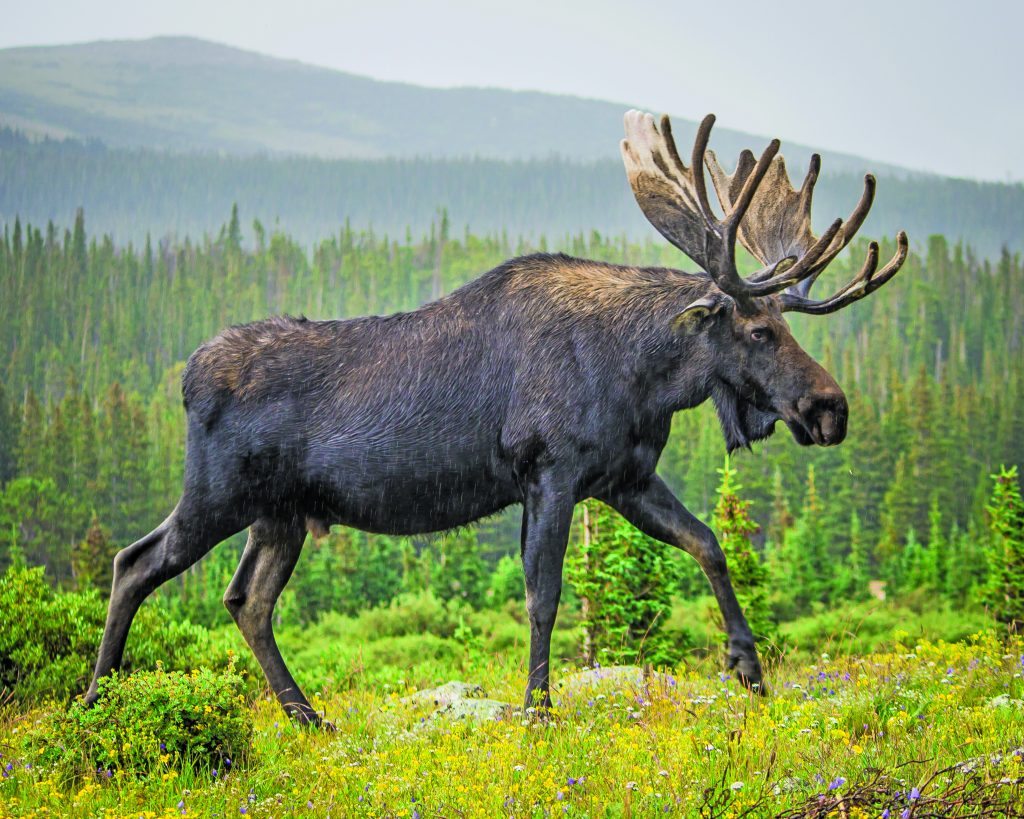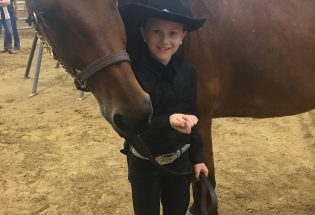Enjoy the great outdoors

By Jim Kilpatrick
The Surveyor
How to maintain the balance of nature is one of the hot topics you will hear discussed today among environmentalists, conservationists, sportsmen, politicians and the general public. Just how far do we go in trying to restore an ecosystem? Do we leave it the way it is now with what has been done to it through the years? In some cases with overhunting and overfishing, some species are believed to be extinct. Sometimes we have attempted to intervene with the introduction of non-natives species trying to fill a void in that particular ecosystem leading at times to disastrous consequences. Is it best to return it back to the way it was if possible? Do we go to the extremes of eliminating non-native species to bring back that native condition? In every case, there are always two sides to the argument of what we should or shouldn’t do. I personally, in most cases happen to lean toward the side that wants things back to the way they were, as much as possible. Sometimes it is impossible to turn back time. As I have stated until 140 years ago the only native trout that lived in the lakes, rivers, and creeks here in Colorado were the Cutthroat Trout. Loss of habitat and the introduction of non-native trout which were more aggressive caused the population of all the cutthroats’ subspecies to decline. But it would be impossible to eliminate all the rainbow, brown, and brook trout from the thousands of miles of water within the state. So, we have to continue to work to ensure that our native cutthroats have a place in nature. It means isolating them in areas without competitors. I prefer they would be restored to their historic home waters, so people like me can enjoy catching one, holding one, taking photographs and then releasing them to continue to increase for all our sakes.
Let’s look at the success story of the moose. I think just about everyone would agree it is a good thing. I know it’s a real joy to see one of these animals in the wild. They are powerful large creatures. And they are interesting to observe from a safe distance. I have many times had them come nearby while fishing. The historical records dating back to the 1850s, and our Parks and Wildlife indicate that moose wandered into northern Colorado from Wyoming, but they were transient and never established a stable breeding population. Most of the historic sightings involved hunters seeing and/or harvesting a single bull moose. In the 1950s, Colorado wildlife officials began to consider bringing moose to the state. There were some concerns voiced at public meetings on a series of proposals. The fear was that the moose would compete with cattle and sheep on grazing land, and potentially damage local ecosystems and other wildlife species. State wildlife managers advocated moose reintroduction because of the abundant habitat available and lack of natural predators here at that time. During the 1960s and the early 1970s, the Colorado Division of Wildlife (now Colorado Parks and Wildlife) worked with the U.S. Forest Service, the Bureau of Land Management, the National Park Service, the public and local ranchers on selecting the North Park area in the Routt National Forest near Walden as the site for the first moose reintroductions. In 1978, state wildlife experts transplanted 24 male and female moose from Wyoming and Utah to create a breeding population in North Park and to eventually provide hunting opportunities. Additional moose from Wyoming, Utah and Colorado’s own growing population were then introduced to other areas of western Colorado over the years since that initial group. The project succeeded in creating new hunting opportunities and a popular wildlife viewing option. The state Legislature, in 1995, declared Walden the “Moose Viewing Capital of Colorado.” By 2012, the reintroduction program had established a breeding population of about 2,300 moose in Colorado. While the moose population in other states has declined, Colorado’s moose population continues to grow. To learn more you can visit the Moose Visitors Center in Gould, Colorado. You can visit it by driving highway 14 over Cameron Pass and down to the west side of the pass to the center. Most of the research and data about the reintroduction of the moose was provided by the Colorado Parks and Wildlife.
Check this out:
Beginning in October of last year there have been sightings of gray wolves in Moffat County in northwest Colorado. Colorado Parks and Wildlife reported six wolves in January of this year. It is believed that this pack’s members came from the Snake River pack in Wyoming. There have been occasional sightings of a single wolf but this is the first pack since the 1930s observed within our state. The wolf as always is a controversial subject since we have a great deal of ranching and cattle become convenient food sources to these opportunistic hunters. Time will tell what happens with the gray wolf.
Jim Kilpatrick
- September, 20 2019

Modern day Robin Hood
By Aaron Reynolds The Surveyor 3.5 out of 5 Stars When I was growing up...
- February, 21 2020

Berthoud teen accepted to Disney Drea...
Courtesy photo - Berthoud teen Micah Norton was accepted into the Disney Dreamers Academy. By...
- June, 11 2020

Larimer County Fair is on for August ...
Courtesy photo - Logann Caudill (12) with her horse at fair last year. By Katie...
- May, 11 2017

Voth and Bailey are Tri-Valley Confer...
By Kristi Leonard The Surveyor Photo by Karen Von SeggernBerthoud High...
- June, 22 2018

Youth sports are in full swing in Ber...
By Jordan Schachterle The Surveyor Youth sports have...
- March, 12 2015

Hart due back pay for insurance snafu
By Rudy Hemmann The Surveyor The Berthoud Board of Trustees discussed the structure of the...

POLICEBLOTTER
Community News
Northern Water sets C-BT quota at 70% for 2024
Community News

Emotions run high during Revere Property hearing
Community News
Snowpack at 119% above normal
Community News

Karspeck to serve third term as Berthoud mayor
Community News

OPINION – No bitchin’ allowed
Community News
Roy Tripi to become principal of BHS on July 1
Community News
COMMUNITY CALENDAR:
Community Calendar – add an event
Homestead Fine Art Gallery First Fridays OPEN HOUSE
03 May 4:00 PM - 7:00 PM
Homestead Fine Art Gallery First Fridays OPEN HOUSE
07 Jun 4:00 PM - 7:00 PM
Homestead Fine Art Gallery First Fridays OPEN HOUSE
05 Jul 4:00 PM - 7:00 PM
Homestead Fine Art Gallery First Fridays OPEN HOUSE
02 Aug 4:00 PM - 7:00 PM
Homestead Fine Art Gallery First Fridays OPEN HOUSE
06 Sep 4:00 PM - 7:00 PM
Homestead Fine Art Gallery First Fridays OPEN HOUSE
04 Oct 4:00 PM - 7:00 PM

